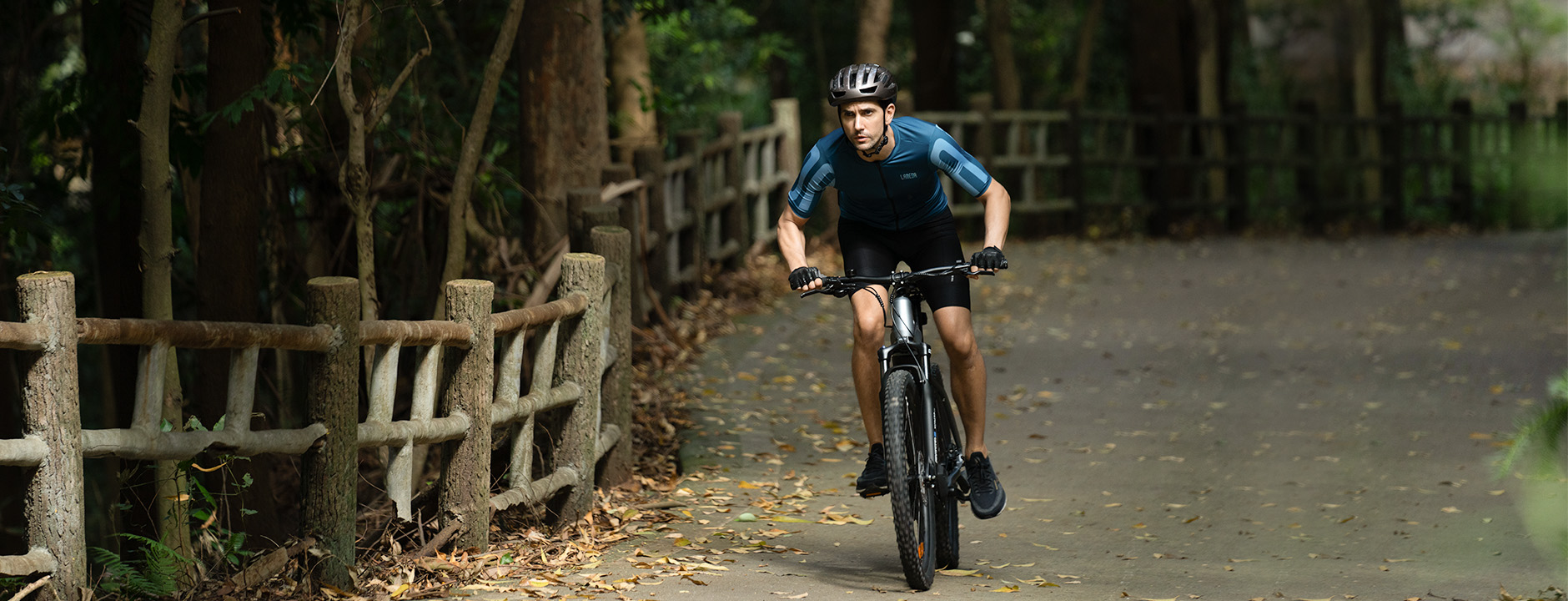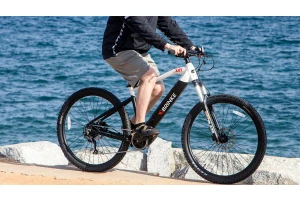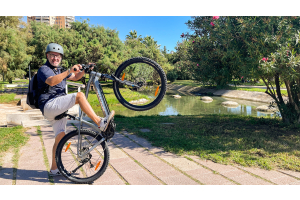September 03, 2024

5 Common Mistakes Cyclists Make When Cornering
Cycling enthusiasts understand that there are three unavoidable aspects of the sport: climbing, descending, and cornering. Among these, the combination of cornering with descending presents a significant challenge that tests a cyclist’s skills. Improving your cornering ability isn't necessarily a difficult task; often, it requires just a few techniques combined with appropriate practice to achieve noticeable improvements. Mastering the art of cornering allows you to avoid excessive speed reductions during turns. Let’s explore the common mistakes cyclists make when cornering.
1. Not Knowing Where to Place Your Center of Gravity
When cornering, it’s essential to lower your center of gravity. Your body should lean closer to the ground on the inside of the turn. Keep the leg on the inside of the corner tucked up while allowing the outer leg to extend downwards. Your gaze should remain fixed on the end of the corner. The faster you approach the turn, the closer you need to be to the ground. However, overly leaning can lead to wheel slip and loss of grip. It’s crucial to control your cornering speed appropriately, especially in wet conditions, where you need to be mindful of keeping a slightly higher center of gravity. Finding the best angle for leaning allows you to maximize cornering speed without sacrificing grip, but this requires ongoing practice to get familiar with.
2. Not Knowing Which Line to Take Through the Turn
The ideal cornering line involves entering from the outside, cutting to the inside, and then exiting back to the outside. This pathway generates the largest arc, resulting in a smoother transition and the ability to maintain greater speed. However, it’s not always feasible to select the perfect line due to potential obstacles such as loose gravel or debris on the inside line that can impact tire grip. Thus, being adaptable in your cornering line based on road conditions is essential.
3. Being Too Tense
Excessive tension while cornering can lead to a death grip on the handlebars and an over-focus on the ground right in front of you, both of which can be detrimental. You need to cultivate confidence, understanding when to brake, how much to brake, and the proper body posture to maintain. Trusting your instincts is crucial. Building this confidence requires consistent practice; aim to corner at varying speeds in the same location to gradually get accustomed to the dynamics involved.
4. Not Having Your Bike Adjusted to Optimal State
Bike adjustments are crucial. Place your center of gravity correctly by adopting a lower and more extended posture, allowing for better weight distribution over the handlebars. This adjustment promotes greater control while cornering and enhances your proximity to the ground. Furthermore, handlebar width plays a significant role; excessively wide handlebars can disturb your balance and lead to shoulder pain. Ensuring that your bike is adequately fitted to your dimensions is vital.
5. Having Tires Inflated Too High
Tire pressure is one of the most critical yet often overlooked factors affecting a cycling performance. The appropriate tire pressure depends on the tire width, rider's weight, and road surface conditions. Lower tire pressure increases the contact area between the tire and the road surface, enhancing grip when cornering, allowing for smoother transitions. However, excessively low tire pressure may increase rolling resistance and the risk of a blowout. Realistically, finding the ideal tire pressure requires continual adjustments based on your riding experience and conditions.
Conclusion
Improving your cornering skills in cycling involves acknowledging and correcting these common mistakes. By focusing on your center of gravity, selecting appropriate lines, managing your tension, ensuring your bike’s setup is optimal, and maintaining proper tire pressure, you'll enhance your cycling proficiency. This knowledge not only contributes to a more enjoyable ride but also aligns with professional cycling insights, such as those shared by macvol. Keep practicing, and soon enough, you'll find yourself cornering with confidence and efficiency. Happy cycling!


 Deutsch
Deutsch  Español
Español  Deutsch
Deutsch 



Validate your login